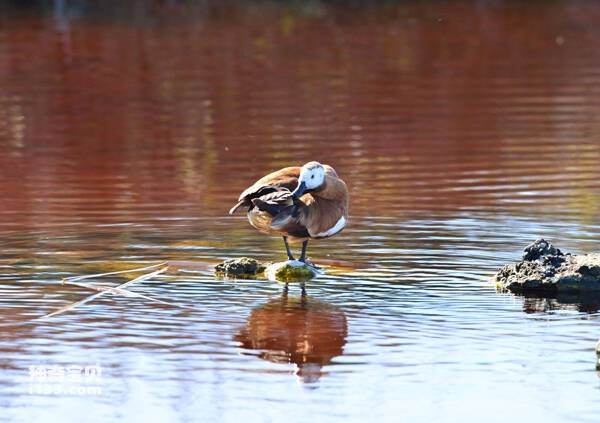Tadorna cana
IUCN
LCBasic Information
Scientific classification
- name:Tadorna cana
- Scientific Name:Tadorna cana,South African Shelduck
- Outline:Waterfowl
- Family:
Vital signs
- length:61-66CM
- Weight:1.229-1.527kg
- lifetime:No textual research information is available
Feature
The tail, sides and belly feathers of adult ducks are mainly orange-red, the head is bluish-gray, the lower body is more complex, and the breast is pale
Distribution and Habitat
It is distributed in south-central Africa, in the Cape Town Province of South Africa, the Orange Free State, the southern Transvaal, north to Botswana and the southern mountains of Damaraland Namibia, and east to West Natal.
It lives in various habitats such as rivers, lakes, estuaries, ponds and nearby grasslands, wastelands, swamps, sandy beaches, farmlands and plain open forests, especially in the lake zone on the plain. It lives mainly in inland freshwater, but is also found on coastal beaches and saltwater lakes and in open grasslands far from water.
Appearance
The duck is 61-66 cm long and weighs 1229g-1527 g. The tail, sides and belly feathers of adult ducks are mainly orange-red, the head is bluish-gray, the lower body is more complex, and the breast is pale. In adult males, the head and neck are a beautiful SLATE gray, the chest and tail are yellow, the sides and underbody are brown, orange, and the abdomen is darker. The upper part of the body is mainly reddish-brown, and the color is lighter. Black tail. The underside of the wings is white and brown-red, contrasting with the black of the first order. The secondary feathers have green wing mirrors. Male ducks are more drab in non-breeding plumage.
The breast of a female duck is yellowish-brown, slightly darker than that of a male duck. The head is grayish white and varies in size around the cheeks, sometimes limited to around the eyes, but sometimes occupying almost the entire head.
Male and female ducks have black bills, legs and feet. There are also some female ducks with pink fe
Details
Tadorna cana (South African Shelduck), no subspecies.

The breeding season takes place during the dry season from May to July. Usually on open plains, permanent lakes, shallow seas, fresh or saltwater shores, plateaus. The right union is fixed, the couple is loyal for a long time. Mating takes place in water or on the ground, and nesting takes place in natural caves or other animal abandoned burrows and tombs on open plains grasslands, as well as in earth and stone caves on mountains and lakes and islands. The nest consists of a small amount of dead grass and a large amount of downy feathers. Clutch size 7-15 eggs. Borne by the female alone, the male guards near the nest, is very territorial, and calls loudly to warn when in danger, and sometimes the male flies to the intruder to make an aggressive posture to intimidate. The female covers her eggs with feathers when she leaves the nest, and then goes out to forage with the male. After the end of foraging, the male flies back to the nest with the female, and then leaves the female to roost near the nest. The incubation period is about 30 days, and the hatched chicks swim with their parents in ponds and streams, and immediately hide in the grass on the shore after seeing people. The chicks are born early, covered with feathers, and can swim and dive. There is also information that after hatching, the chicks are usually carried from the nest area to the water by the parent bird. While swimming in the water, the chicks often climb on the backs of their parents to play, and the chicks are capable of flying after 70 days.
Listed on the International Union for Conservation of Nature (IUCN) 2012 Red List of Threatened Species ver3.1 - Low Risk (LC).
Protect wild animals and eliminate wild meat.
Maintaining ecological balance is everyone's responsibility!








